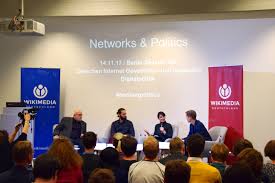In our increasingly digital age, the Internet has become a cornerstone of modern life, facilitating communication, commerce, and countless other activities. Yet, behind the scenes of this global network lies a complex web of rules, policies, and organizations that govern its operation. This is what we refer to as internet governance.
What is Internet Governance?
Internet governance encompasses the development and application of shared principles, norms, rules, decision-making procedures, and programs that shape the evolution and use of the Internet. It is a multifaceted field that involves various stakeholders, including governments, private sector companies, technical experts, and civil society organizations.
The primary aim of Internet governance is to ensure that the Internet remains a secure, accessible, and innovative platform that serves the needs of people worldwide. It involves addressing issues such as:
- Regulatory Frameworks: Developing policies and laws to manage Internet infrastructure and content. This includes everything from data protection regulations to rules governing online behavior.
- Technical Standards: Establishing protocols and standards that ensure the smooth operation of the Internet. This involves organizations like the Internet Engineering Task Force (IETF) and the Internet Corporation for Assigned Names and Numbers (ICANN).
- Cybersecurity: Implementing measures to protect the Internet from threats and attacks, ensuring data privacy and user safety.
- Access and Inclusion: Promoting equal access to the Internet and bridging the digital divide, ensuring that all individuals, regardless of their location or socioeconomic status, can participate in the digital economy.
Key Players in Internet Governance
- Governments: National governments play a crucial role in shaping policies and regulations that impact the Internet. They often collaborate on international agreements and treaties to address cross-border issues.
- Private Sector: Companies that provide Internet services, create software, or develop hardware are integral to Internet governance. They help set technical standards and often lead innovation in the field.
- Technical Communities: Organizations such as ICANN, the Internet Society (ISOC), and the World Wide Web Consortium (W3C) are responsible for technical aspects and standards that ensure the Internet functions properly.
- Civil Society: Non-governmental organizations and advocacy groups represent the interests of users and promote policies that enhance the openness and inclusivity of the Internet.
- International Organizations: Entities like the United Nations and the International Telecommunication Union (ITU) facilitate global cooperation and address global challenges related to the Internet.
Challenges and Future Directions
As the Internet continues to evolve, so do the challenges associated with its governance. Key issues include:
- Privacy and Data Protection: With increasing amounts of personal data being shared online, ensuring robust privacy protections is a major concern.
- Cybercrime: As cyber threats become more sophisticated, developing effective responses and international cooperation is critical.
- Net Neutrality: Balancing the need for open access with the interests of service providers and content creators remains a contentious issue.
- Global Disparities: Addressing the digital divide and ensuring equitable access to technology is essential for global inclusion.
Conclusion
Internet governance is a dynamic and multifaceted field that requires ongoing collaboration and innovation. As we navigate the complexities of our digital world, it is crucial for all stakeholders to work together to create a framework that fosters a secure, inclusive, and vibrant Internet. Understanding and participating in this governance is not just a matter of technical expertise but a collective responsibility that impacts everyone in our interconnected world.
